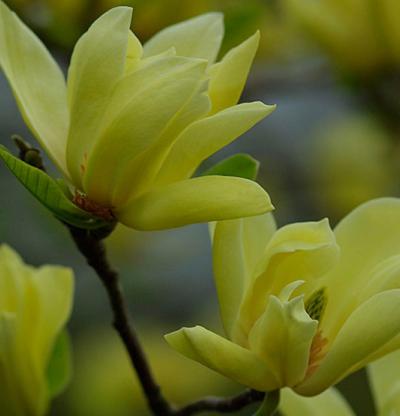





 Magnolia (Magnolia 'Butterflies')
mag-NO-lee-ah
Genus:
Magnolia
Magnolia (Magnolia 'Butterflies')
mag-NO-lee-ah
Genus:
Magnolia
This cross of M. acuminata and M. denudata usually forms a small tree with an upright central leader or sometimes a multi-stemmed shrub. It has yellow cup to star-shaped flowers (3 to 4 inches across) that are fragrant and appear before the leaves in early to mid-spring.
Care:Grow in moist, well-drained, preferably acidic to neutral soil in sun or partial shade; they do not tolerate wet feet. Magnolia flowerbuds are susceptible to late-season frosts; shelter large-leaved species from windy locations. Prune trees and deciduous shrubs in late winter or late summer to prevent bleeding of sap; prune minimally to maintain a healthy framework.
Propagation:Sow seeds in autumn or stratify to hasten germination. Root softwood cuttings in early summer. Magnolias can be layered in early spring, grafted in winter, and propagated by bud in summer.
Problems:Bacterial leaf spot, spot anthracnose, canker, dieback, butt rot, powdery mildew, anthracnose, fungal spots, weevils, snails, scale insects, thrips, planthoppers.
Copyright © www.100flowers.win Botanic Garden All Rights Reserved